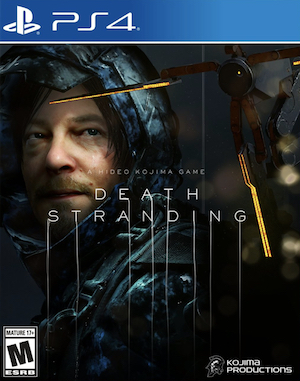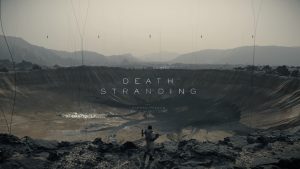One of the greatest developers in the history of video games is Hideo Kojima, the creator of the Metal Gear Solid franchise, as well as the upcoming Death Stranding. He has been responsible for some of the greatest video games ever made, as well as for some legitimate advancements in the medium.
The question is- how does he do it? How does he approach the game making process? Speaking today on Twitter, Kojima pondered a bit on how he approaches his creative process, noting that game making is fundamentally different from something like film making. He said that unlike in a movie, every element in could have multiple purposes- storytelling, mechanics related, atmosphere building, pacing, and more. He said that these things need to be kept in mind, as well as the nitty gritty details of the specifics of each elements.
Unlike in a game, he pointed out, there need to be constant revisions made to details, based not just on plot considerations, but also considerations based on gameplay, interactivity, the larger game design, pacing, mechanical rhythm, and more. He noted that you can’t just do things in an assembly line process- everything has to be meticulously crafted so it makes sense within the context of the game.
It all sounds obvious- but I have a feeling these practices are less common in the industry than you might think. In the end, I imagine that is what separates the good games and creators from the great ones.
Game creation is different from film making. Let’s say we imagine “a hallway the player is meant to walk down according to the game design.
— HIDEO_KOJIMA (@HIDEO_KOJIMA_EN) September 5, 2017
The hallway has meaning in the plot as well as the game design. Is the purpose to deliver the story, to practice the controls,
— HIDEO_KOJIMA (@HIDEO_KOJIMA_EN) September 5, 2017
to show the scenery, or to add rhythm to the game play? A variety of possibilities exist. As the game development proceeds,
— HIDEO_KOJIMA (@HIDEO_KOJIMA_EN) September 5, 2017
the details need to be fleshed out. How about the lighting, the walls of the hallway, how long is it and how high is the ceiling?
— HIDEO_KOJIMA (@HIDEO_KOJIMA_EN) September 5, 2017
Can doors be opened? Who else walks down the hallway? How does player feel at this moment in the game?
— HIDEO_KOJIMA (@HIDEO_KOJIMA_EN) September 5, 2017
there is a never ending stream of revisions based on the plot, gameplay, the map layout, as well as dealing with technical hurdles.
— HIDEO_KOJIMA (@HIDEO_KOJIMA_EN) September 5, 2017
There are other various details to consider, like adding a crank turn to the hallway, is it possible to add NPCs,
— HIDEO_KOJIMA (@HIDEO_KOJIMA_EN) September 5, 2017
how to fix poor gameplay tempo, making the characters stand out, or even whether to show the ceiling in cutscenes.
— HIDEO_KOJIMA (@HIDEO_KOJIMA_EN) September 5, 2017
Almost everyday revisions are made depending on the point in the game development process.
— HIDEO_KOJIMA (@HIDEO_KOJIMA_EN) September 5, 2017
An action game can never be completed by ordering from a blueprint and assembling parts off a factory line.
— HIDEO_KOJIMA (@HIDEO_KOJIMA_EN) September 5, 2017
If decision making and supervision are delayed, production efficiency drops, and that leads to redoing work. In order to avoid this trap,
— HIDEO_KOJIMA (@HIDEO_KOJIMA_EN) September 5, 2017
one must make small daily adjustment on site while creating the game. When everything is outsourced,
— HIDEO_KOJIMA (@HIDEO_KOJIMA_EN) September 5, 2017
the parts that come back just don't fit together. That is why it's important to take charge of the little details everyday.
— HIDEO_KOJIMA (@HIDEO_KOJIMA_EN) September 5, 2017
The feeling of gameplay in a single hallway, the concept, the visuals, the controls, the story hints, the map, the sound, the directions,
— HIDEO_KOJIMA (@HIDEO_KOJIMA_EN) September 5, 2017
all those are important to the overall game. Scripts and gimmicks change everyday. This is what it means to make games,
— HIDEO_KOJIMA (@HIDEO_KOJIMA_EN) September 5, 2017
a process completely different from the concept ->script->game design->preproduction ->shooting->postproduction process of film.
— HIDEO_KOJIMA (@HIDEO_KOJIMA_EN) September 5, 2017

















![Top 15 Xbox Series X Games With Stunning Graphics [2024 Edition]](https://gamingbolt.com/wp-content/uploads/2024/11/xbox-series-x-key-art-300x169.jpg)
Share Your Thoughts Below (Always follow our comments policy!)